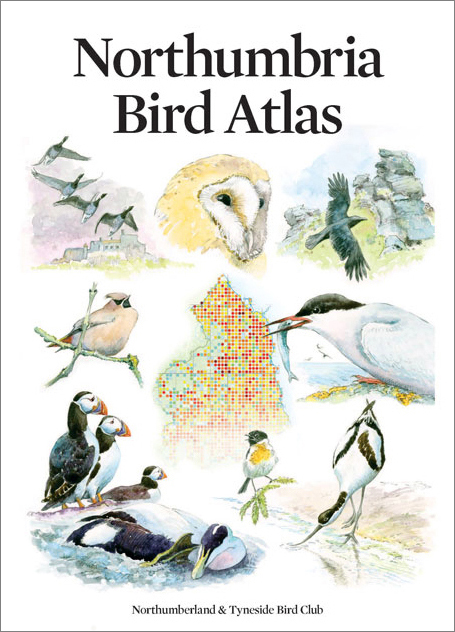
Publisher: Northumberland & Tyneside Bird Club
Publication Year: 2015
Binding: 2
Page Count: 512
ISBN Number: 978-0-9557406-6-4
Price: £25.00
Northumbria Bird Atlas 2007-11
Taken together, the county of Northumberland and the local authorities of North Tyneside and Newcastle upon Tyne make up one of the largest ornithological recording areas within England, underlining the challenging task of surveying the region for its breeding and wintering birds. The result of these efforts is this impressive book, published by Northumberland & Tyneside Bird Club with the support of the Heritage Lottery Fund and many individuals and organisations.
In common with many other county atlases, the book begins with an overview of the landscapes and habitats to be found within the area, highlighting their use by particular birds or groups of species. A short (two-page) review of the weather conditions encountered during the atlas survey period (2007-2011) provides some valuable additional context, useful when interpreting the species accounts. The final introductory sections outline the methods used for the atlas fieldwork and for interpretation of the records collected. The remainder of the book is mostly taken up with the species accounts – roughly 400 pages – with appendices giving additional detail on population estimates, distribution change, community metrics from within individual tetrads (e.g. species richness) and locality and observer lists.
The individual species accounts typically occupy a double-page spread, with a short introduction to the species and its conservation status and a slightly longer overview of the patterns seen within the distribution and abundance data collected through atlas fieldwork. The accounts have been written by a spread of contributors and, although generally of a very high standard, they could have benefitted from stronger editorial input in some instances.
The maps are full colour, with coloured dots presented at the tetrad level to denote abundance. The use of a common scale across all of the species covered, together with the colours chosen for individual abundance categories, is perhaps less helpful that it might otherwise have been. The distribution maps, however, are clear and easy to interpret, as are the distribution change maps – though the combination of red and green might not work so well for those suffering from red-green colour blindness. A table presents key information from across the run of Northumberland breeding and wintering atlases, allowing losses and gains to be assessed.
With the exception of Quail, all of the photographs that accompany the species accounts – there is one photograph per account – were taken within the county. The quality of these is generally high throughout, the images being bright, crisp and in focus. The book is quite heavy in the hand, though the extended portrait shape makes handling easier than in might otherwise have been. The overall design doesn’t quite hold together to my eye; the use of a particularly large font for the common names is jarring and the variation between accounts in placement of the species names (there are no running headers to the species accounts) makes it difficult to flick between species. These, however, are minor criticisms of a solid and well-produced account of the region’s birds and of the efforts that went in to this local atlas project. At £25 the book is excellent value for money.
Book reviewed by Mike Toms
Buy this book




Share this page